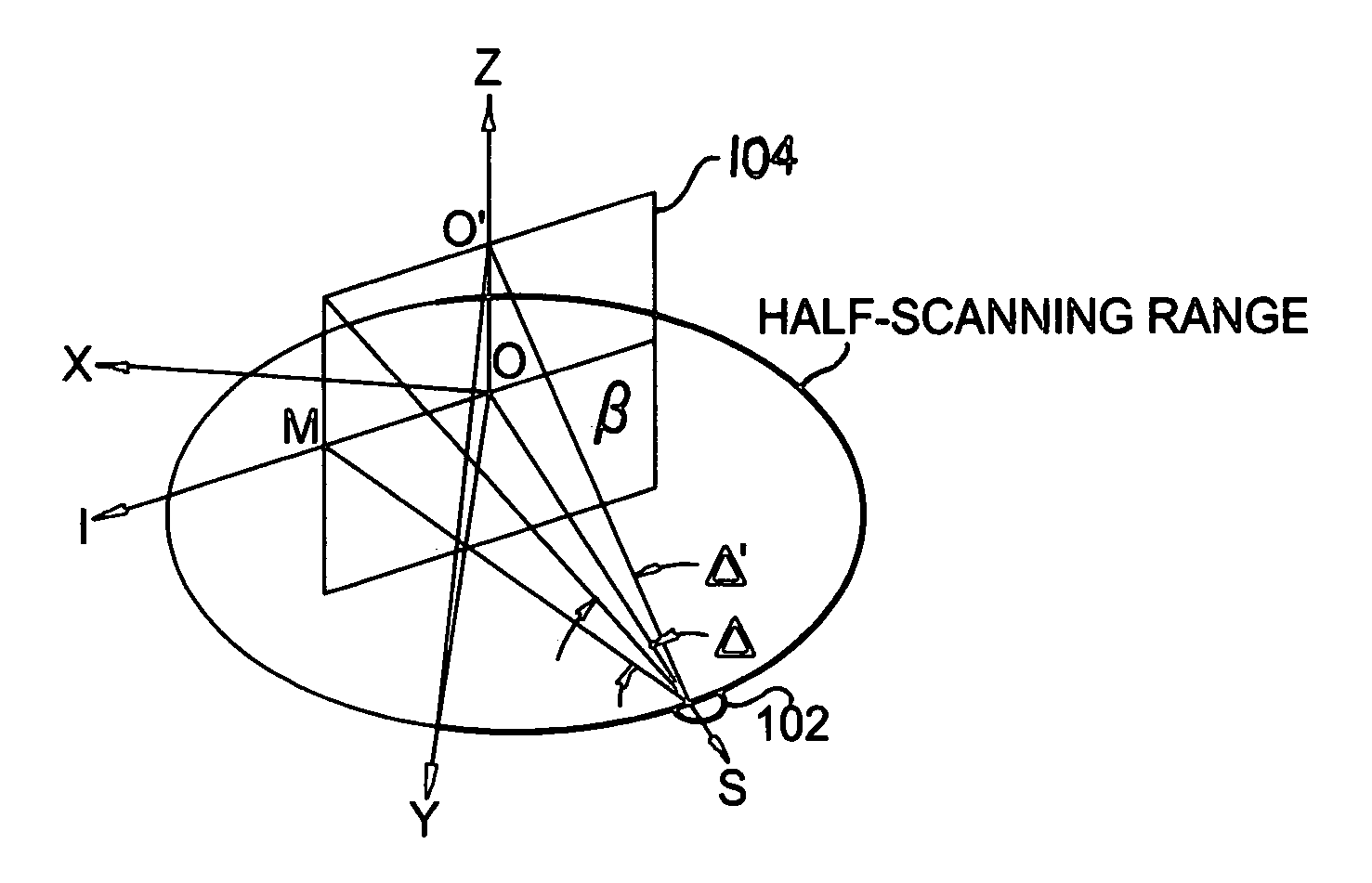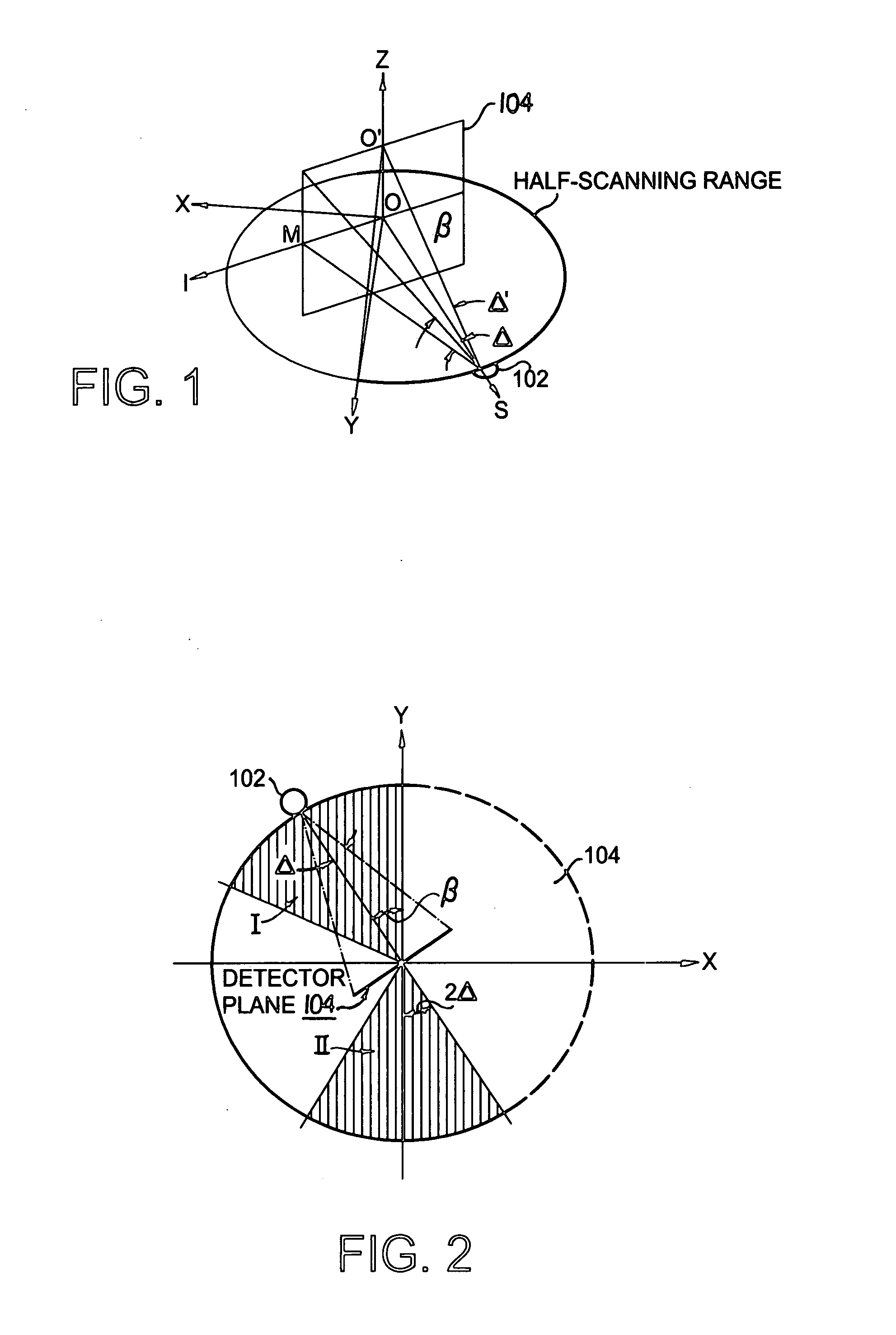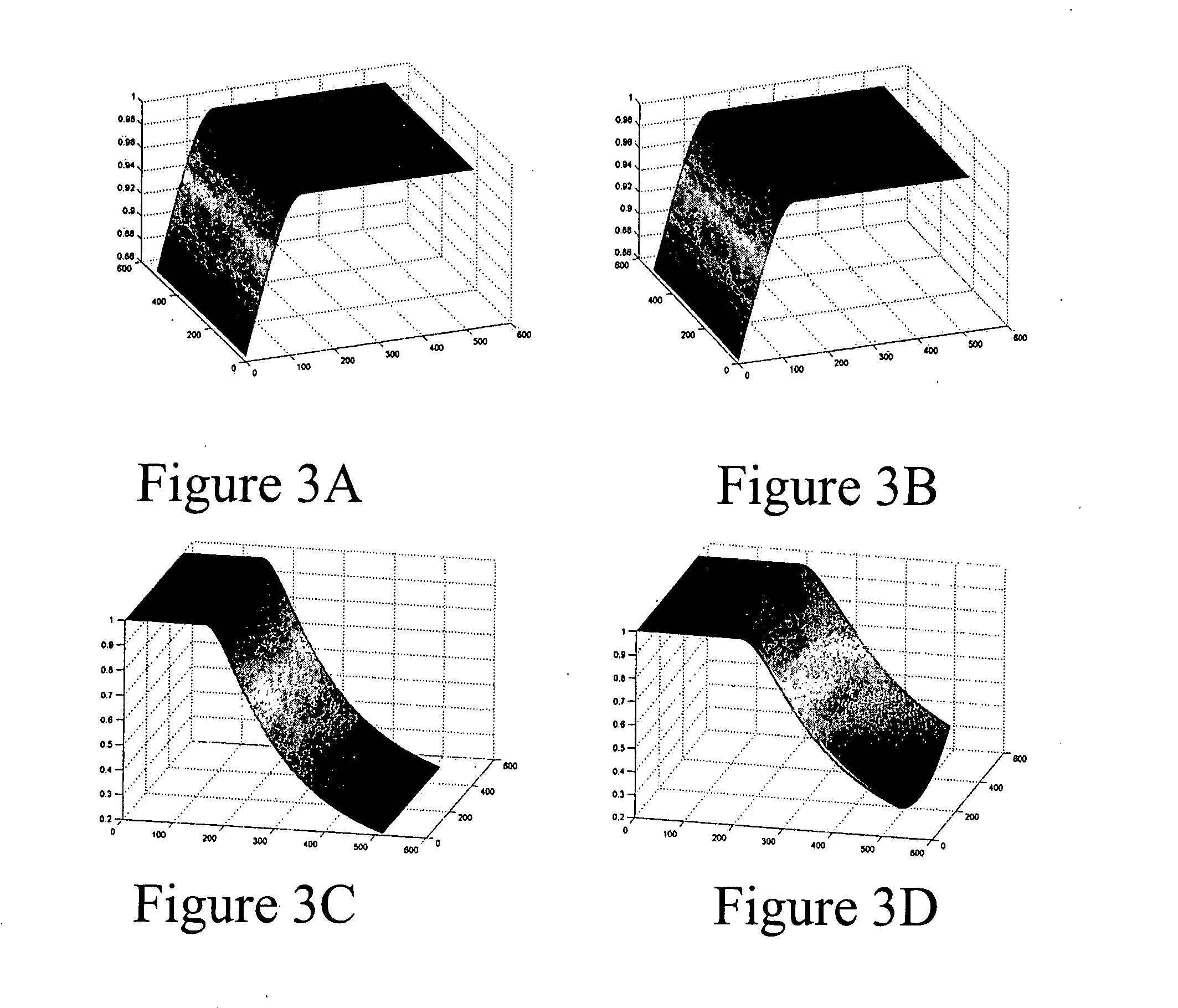Method and apparatus for cone beam CT dynamic imaging
- Summary
- Abstract
- Description
- Claims
- Application Information
AI Technical Summary
Benefits of technology
Problems solved by technology
Method used
Image
Examples
Embodiment Construction
[0028] Preferred embodiments of the invention will be set forth in detail with reference to the drawings, in which like reference numerals refer to like elements or steps throughout.
[0029] The FDK algorithm expands upon the fan beam algorithm by summing the contribution to the object of all the tilted fan beams. The reconstruction is based on filtering and back projecting a single fan beam within the cone. Based on the cone beam geometry in FIG. 1, which shows the relative locations of the cone beam emitter or other x-ray source 102 and the plane of the flat-panel detector 104, the formula of the FDK is: f(x,y,z)=12∫02πso2(so-s)2·{[Rβ(np,m ξ)soso2+m2ξ2+n2p2]*h(np)}ⅆβs=-x sin β+y cos β;(1)
[0030] The * sign denotes the convolution; so: the distance from the x-ray source to the origin; n,m: integer value where n=0 and m=0 corresponds to the central ray passing through the origin; β: the projection angle defined in the scanning plane; p: the virtual detector samp...
PUM
 Login to View More
Login to View More Abstract
Description
Claims
Application Information
 Login to View More
Login to View More - R&D
- Intellectual Property
- Life Sciences
- Materials
- Tech Scout
- Unparalleled Data Quality
- Higher Quality Content
- 60% Fewer Hallucinations
Browse by: Latest US Patents, China's latest patents, Technical Efficacy Thesaurus, Application Domain, Technology Topic, Popular Technical Reports.
© 2025 PatSnap. All rights reserved.Legal|Privacy policy|Modern Slavery Act Transparency Statement|Sitemap|About US| Contact US: help@patsnap.com



